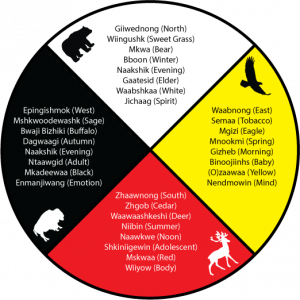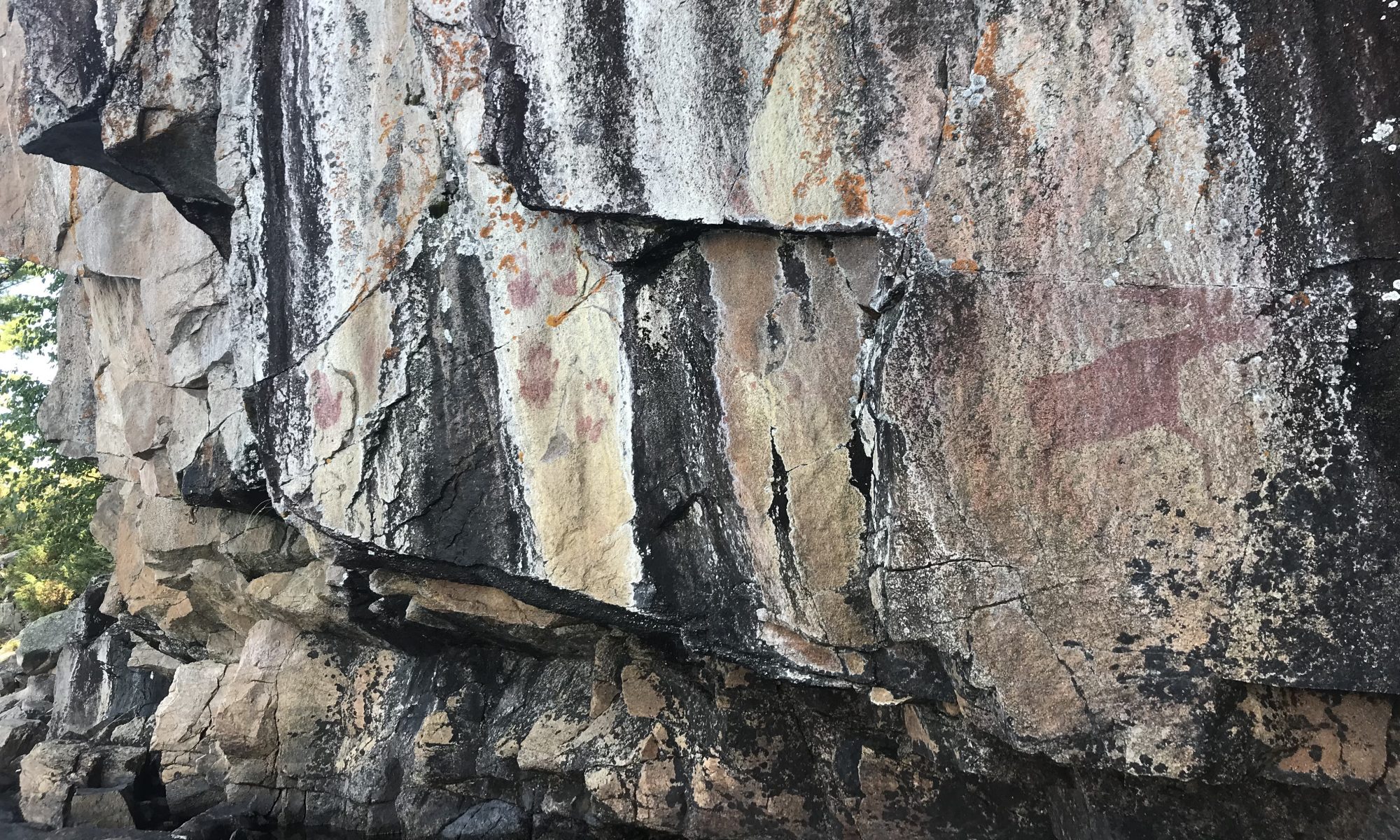7. Describe how King uses the cyclical paradigm of the Medicine Wheel (and a little help from Coyote) to teach us to understand, or at least to try to understand the power behind the stories we tell ourselves.

The Medicine Wheel — though not originally an indigenous term, is a symbol used to described an Indigenous world view. As one can see, the medicine wheel is divided up into four quadrants each representing different parts of one’s self and the world, and together the make up a wholistic and balanced life. Although there are many versions of the medicine wheel, this is an example of an Anishinaabe wheel that include the nautical directions, (North, East, South West) healing herbs, (Sweet Grass, Tobacco, Cedar, Sage) parts of life, (Elder, Baby, Adolescent, Adult) parts of a person (Spirit, Mind, Body, Emotion) and more.
King makes multiple connections between his story Green Grass, Running Water, and the symbol of the Indigenous Medicine Wheel. Firstly, as Professor Paterson explains in lesson 3.2, the number four (representing the four quadrants of the wheel) is a symbol that is used repeatedly throughout the text. “The novel has four sections, with four headings,…[and] Four Old Indians who narrate the stories of the four mythical women who fall from the sky.” (Paterson 3.2) Additionally, as Professor Paterson pointed out, each of these four women correspond further to the medicine as they each emulate the different stages in life as seen on the wheel: First Woman/ Birth, Changing Woman/ Youth, Thought Woman/ Parent, Old Woman/ Elder. (Paterson 3.2)
Furthermore, King also uses the symbol of the Medicine Wheel as a mechanism for the structure of the novel. A major component of the wheel is that it is cyclical, it never ends. Once there is death, someone is then reborn, the seasons never stop changing, and nighttime never fails to become morning…etc. King takes this cyclical narrative and applies it to his novel. The structure of the novel’s storytelling creates an interconnectedness between each of the four main plot lines of the story, (another four) the creation stories, the old Indians, the search for the Indians, and the story from the reserve. This interconnectedness makes the story feel cyclical, as any at any point of plot progress, throughout the novel, the story immediately changes to a different plot, abolishing any notion of a linear story. This reflects the wheel as keeps the story cyclical and also creates a feeling of harmony and balance between each of the stories.
Another way King creates a cyclical structure in his novel is by featuring a similar story at both the beginning and the end. In the beginning of the novel, the Coyote asks the question “where did all that water come from?” (King 14). That same question is the posed in the final moments of the novel “but where did all the water come from?” which ‘I’ responds “here’s how it happened” (King 1014). Beginning the story in the same way as it ends immediately creates a cyclical structure, however by King ending the novel with a leading question that would suggest the the ‘I’ character was about to tell the same story we had just heard, makes the story not only seem as if it came full circle, but that it can keep doing circles over and over again, and that the cycle will never end — the same way the Medicine Wheel would never end.
By creating this cyclical story King is trying to articulate to the reader the importance of stories in how they are able to stay with the reader/listener. As we read in the truth about stories, all stories tell become “loose in the world” (Truth about Stories 10) and cannot ever be called back, they simply keep coming up in your life — the same way the Coyote continuously appeared through every plot line in the story. Using the power that the story holds with the Medicine Wheel, the coyote is able to alter every point of the novel. This is then expanded to the notion that any story that we hear, or learn, has the ability to alter any point of your life.
————
A personal regard to the Medicine Wheel:
I had never seen or heard of a medicine wheel before this lesson, however was surprised with how much the symbolism of the Medicine Wheel is showcased in my camp, even though I had no idea. The ceremony called council ring, which I spoke of in my introductory post, has four different quadrants, each for the four sections of my camp, which sit in the four nautical directions, which represent the four stages of life, and each section wears one of the four colours shown.
What I find incredibly interesting about tradition, and specifically in relation to my camp, is that people can continue a tradition however loose the ties to why it was made this way, however still follow it. However there is a very special moment when one finds where that tradition came from, which is quite incredible and make one feel balanced and whole, the key ideas with the medicine wheel.
Anyways thanks for reading, I was just thinking about this during the entire post and though I would share!
Works Cited
King, Thomas. Green Grass Running Water. Bantam, 1994.
King, Thomas. The Truth About Stories: A Native Narrative. Tornoto: Anansi Press, 2003. Print.
Paterson, Erika. “Lesson 3.2.” ENGL 470A Canadian Studies: Canadian Literary Genres May 2016. University of British Columbia, n.d. Web. 23 Mar 2019.
“The Medicine Wheel.” Curve Lake Cultural Centre. N.p., n.d. Web. 23 Mar. 2019.
